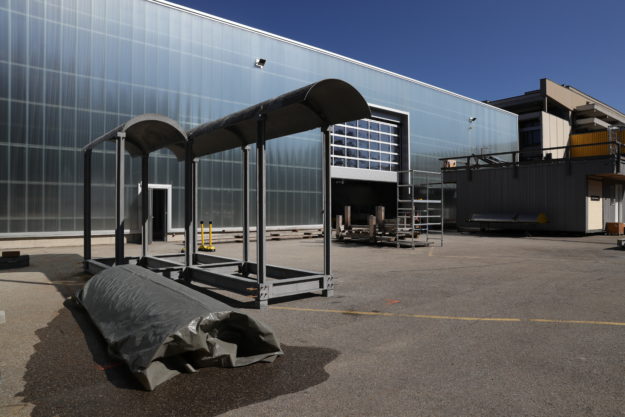Building on the ENAC course “Argamassa Armada”, the proposed Summer workshop aims at taking the research a step further into the construction of a full-scale prototype pavilion at EPFL Fribourg. The summer workshop format allows to verify the spatial and structural promises outlined by the research and to build a proposition in the form of a concrete 1:1 realization (pavilion). At the basis of the research questions lies the crossing of contemporary structural research into textile reinforced concrete (TRC) and architectural work in ferrocement (Argamassa Armada) done in Brazil by the architect Lelé from ca. 1970-2000.
Textile reinforced concrete allows to reiterate a building technique – ferrocement – that was highly developed in Brazil but in the last years nearly abandoned (empty factories) due to problems of corrosion. TRC (i.e. non-corrosive reinforcement) on the other hand is used nowadays for a very limited field of applications (e.g. facade elements). Its structural potential is still not fully explored and its application potential unknown to most engineers, architects and scientists in practice. The crossing of knowledge aims at exploring the full structural, architectonic and environmental dimensions of TRC. Here we see an enormous potential, as the industry by itself does not have the means to develop a structural and architectonic language, while architects and engineers do not have yet the necessary scientific knowledge to use TRC in an innovative way. It is only at the source, through exploration and testing of the technique itself, that innovation is possible. This also applies to the formwork where – after successful tests in the ENAC Week 2018 and 2019 – we have been working with folded metal, a material used in Brazil but not in use in the Swiss prefabrication industry.
Technical questions are in direct relation with social considerations: How can the formwork be optimised to be used serially? How can seriality incorporate variation and flexibility?
Can large elements be produced with small sheet formats (i.e. a small folding machine)? What are the size-limits imposed by self-construction?
Implicit within this objective are inter-related research questions: How can advances in concrete technology be adapted for diverse climatic requirements or incorporate techniques of recycling or reuse? How can construction protocols and on-site, mini-factories be developed to minimize cost and logistical complexity so that local people take ownership of technology by means of knowledge transfer? What would be the means of diffusing this knowledge? How can this technology be adapted to various uses such as the renovation of abandoned buildings or construction on unstable terrains?
Argamassa Armada as developed by Lelé in Brazil is directly based on social innovations: manual prefabrication and building without cranes due to radical lightness of the elements as well as independency from the construction-industry were constituting factors. These aspects become even more pertinent today as the informal city is still growing; a partial auto-construction would allow inhabitants of the informal city the possibility of co-producing their own habitat. The proposed prototype pavilion in TRC aims at enlightening these aspects and sharing them with our project partners in Salvador de Bahia.
Project Team
Raffael Baur, Architect and external expert, EPFL
Patricia Guaita, Lecturer and Scientist, EPFL
Enrique Corres, PhD student, EPFL
Miguel Fernandez Ruiz, Senior scientist, EPFL
David Fernandez-Ordonez, host Professor, EPFL
